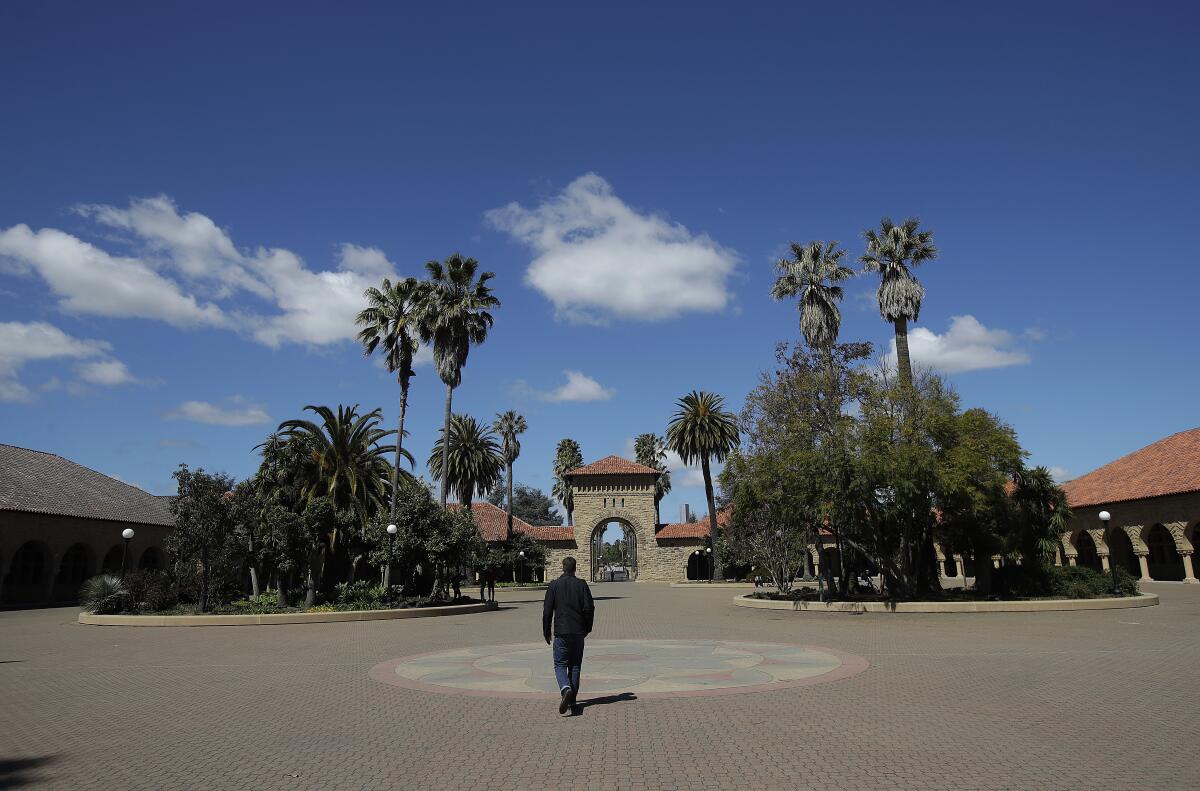Letters to the Editor: What Stanford’s anti-Jewish bias looked like on campus in the 1950s

- Share via
To the editor: In the mid-1950s, my brother and I graduated from Stanford University, which just apologized for its antisemitic practice at the time of severely limiting Jewish enrollment.
Perhaps our Jewish background was hidden because Harris was not an obvious Jewish name, adopted by our grandfather in the 1880s when he was dumped in Scotland on his way to New York by an unscrupulous ship’s captain claiming a need to return to Germany.
Stanford was known for its engineering programs, always referred to by their initials: EE (electrical engineering), ME (mechanical engineering) and CE (chemical engineering). My brother majored in economics, referred to in the day as JE (Jewish engineering).
I always thought that was just a humorous comment. It is only now that I realize it was more likely a manifestation of the prejudice against Jews maintained by some in the student body and the university’s administration.
Godfrey Harris, Encino
..
To the editor: That Stanford intentionally limited Jewish student admissions in the 1950s is old news. This was, unfortunately, common practice among all the elite private universities in the Los Angeles area, including USC and Caltech.
It was not a secret either. My father, a Jewish engineering student, applied to both USC and Caltech and was told the “Jewish quota” was filled for that year and to reapply the following year. He declined and attended a private engineering college that did not have a “Jewish quota.”
Ann C. Hayman, Westwood
..
To the editor: I read with great interest about Stanford’s recent apology for its previous anti-Jewish bias in admissions. In addition to this injustice, Stanford should also reflect on its conduct toward Japanese Americans during World War II.
In June 1942, the Stanford Alumni Review profiled the accomplishments of alumnus Karl Bendetsen, at the time an Army colonel. Known as the architect of the incarceration, Bendetsen callously orchestrated the transfer of Japanese Americans to the camps, bitterly declaring that anyone with “one drop of Japanese blood” should be imprisoned. The university praised Bendetsen for conducting “one of the world’s most remarkable shifts of population.”
In contrast, the magazine dedicated only a brief column listing the names of Stanford’s Japanese American students leaving for camp — the victims of Bendetsen’s work. Instead of defending their Japanese Americans students, Stanford chose to praise their jailer.
Jonathan van Harmelen, Davis, Calif.
The writer is a doctoral student in history at UC Santa Cruz specializing in Japanese internment in World War II.




